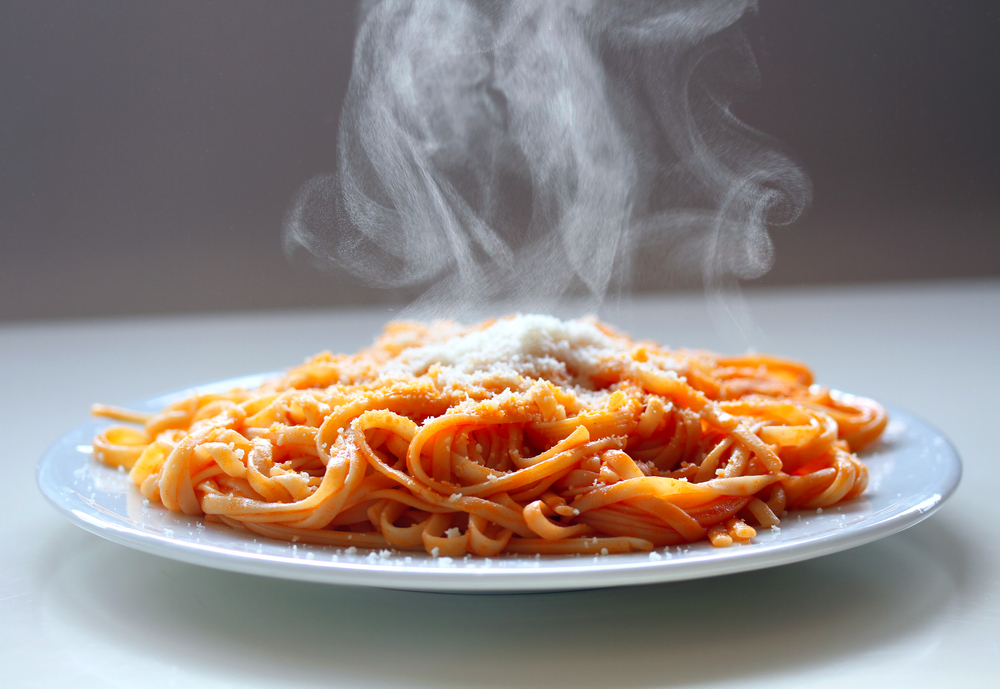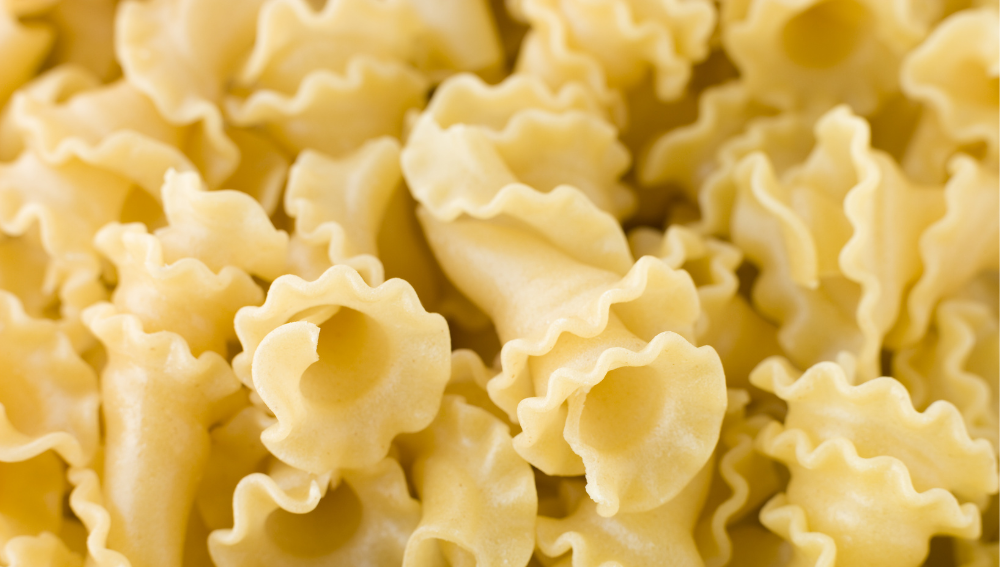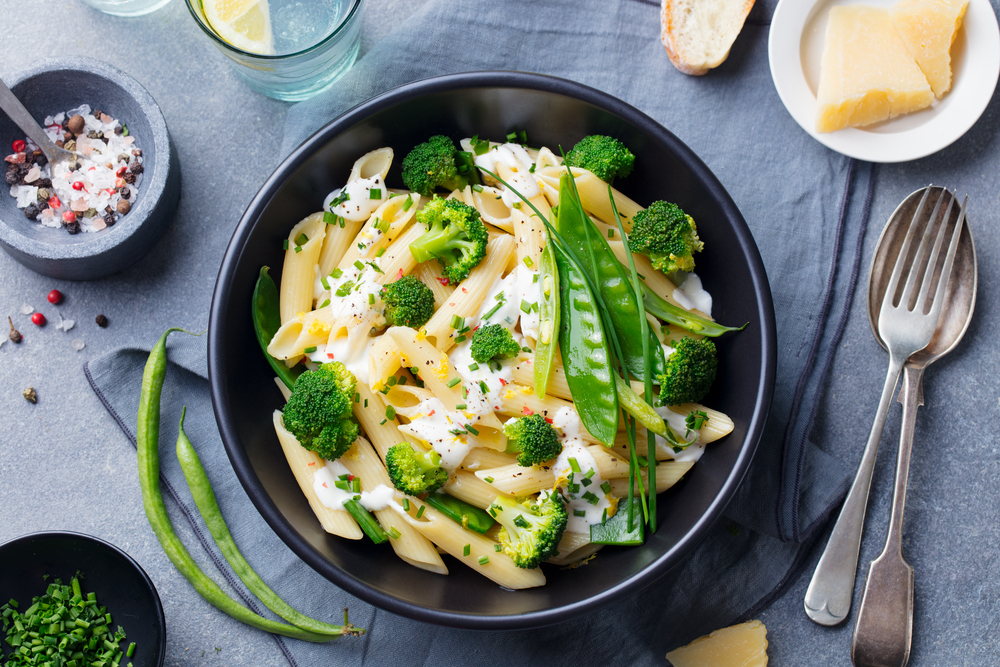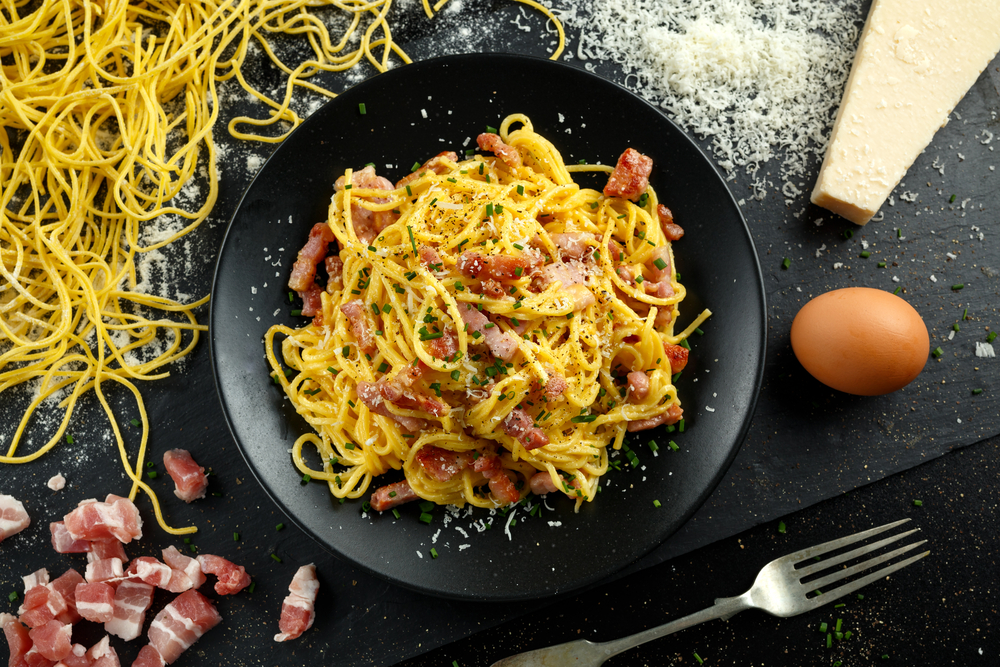Is there anything more delicious than fresh, piping hot spaghetti? It truly is one of the most satisfying and filling foods there is. This is why it’s so frustrating that reheating spaghetti is incredibly underwhelming. Without the right technique, your reheated spaghetti will be flavorless, clumpy, or even dry. Talk about disappointing. Many people wonder “how do you reheat leftover spaghetti?” So if you fall into this category, you are certainly not alone!
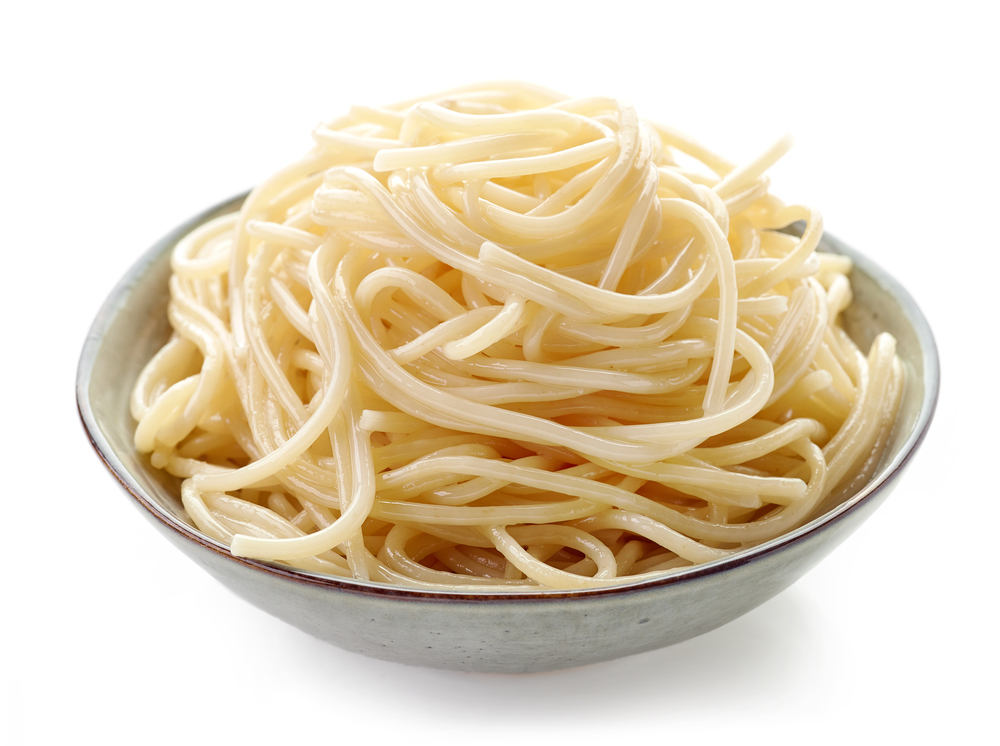
Luckily, there are some really great ways that you can try that will have your leftover pasta tasting just as fresh and delicious as it did on day one. Some of the best methods for reheating spaghetti include boiling, baking, sauteing, or adding it to a soup if you’re feeling creative. In this article we’ll cover how to reheat leftover spaghetti, how to reheat frozen spaghetti, and much more! Read on to learn the best ways to reheat spaghetti noodles.
Boiling Leftover Spaghetti
If you’re scratching your head at this one, we totally get it. Given that boiling pasta for too long in the first place can make it mushy and gross, why would you then boil it after it was already cooked to perfection?? Believe it or not, boiling leftover spaghetti is, in our opinion, the best answer for how to reheat spaghetti noodles without sauce.
And it’s true– this method really only works if you store your pasta and your sauce or toppings separately in the fridge, so we only recommend trying it if you have plain pasta to reheat. All you’re really doing with this method is briefly submerging your pasta in the boiling water. It’s crucial that you don’t let it stay in there too long or it will become the soggy mess you’re imagining.
Here’s how to reheat your spaghetti by boiling it:
- Boil some water– yes, you probably could have figured this out but it needed to be said. For optimal flavor we suggest salting the water as well, but that isn’t strictly necessary (and may not be a good idea if your pasta was already pretty salty to begin with).
- Portion your spaghetti– If you have a lot of leftover spaghetti and are only planning to eat some of it right now, be sure to portion out the amount you plan to eat and save the rest for later. You don’t want to boil your pasta too many times, so you should use this as more of a “boil as you go” method.
- Submerge the spaghetti– again, this should be really brief. In fact, for the best results possible it’s most efficient to use a colander or sieve to dunk your spaghetti in the boiling water. You only need to leave it in there for around thirty seconds– just long enough to get those noodles reheated.
- Remove from the water– after thirty seconds (give or take) are up, remove your pasta from the water and toss it with your toppings or sauce, and voila! Delicious pasta that’s just as good as the very first night.
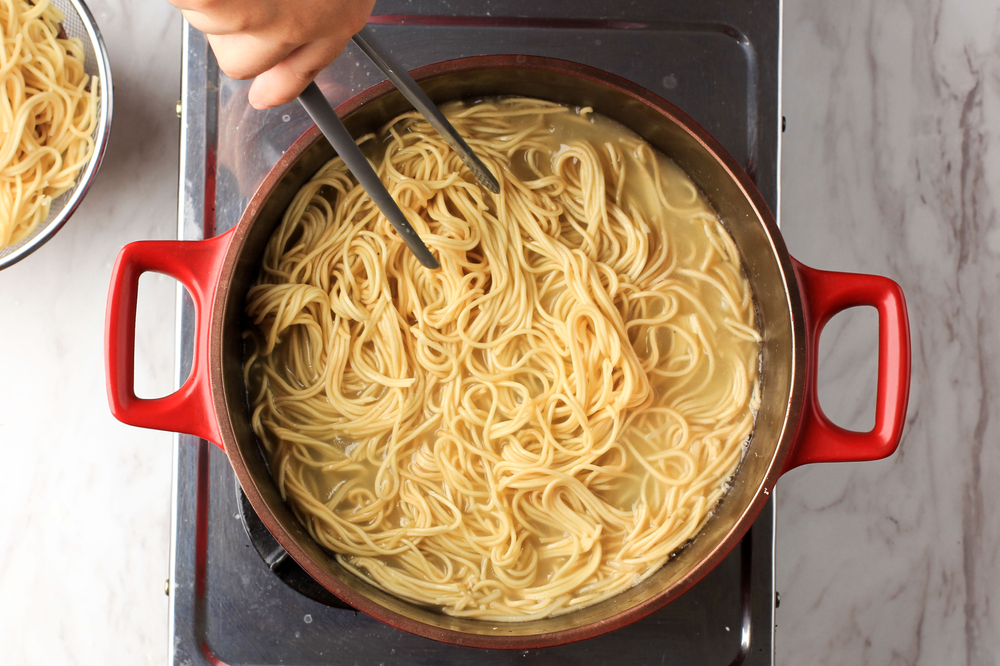
Why this method works
This is a great method because the boiling water works to “remind” the pasta of its ideal state. Sometimes reheating foods– especially carby foods like bread and pasta– really dries them out. Reheating your spaghetti in boiling water helps to keep it nice and moist.
The key to successfully reheating your pasta in boiling water is to only leave it in for a short amount of time. Be careful not to leave it in for too long or your pasta will become mushy and unappetizing.
Again, this method also doesn’t work well if your pasta is already tossed with the sauce. If you typically store your pasta and sauce mixed together, we suggest storing them separately in order to try this method of reheating. You may change your ways for good!
Baking Leftover Spaghetti
Reheating your leftover pasta in the oven is another great way to make sure it keeps all of its delicious flavor during the heating process. This method also works for spaghetti that is already mixed with pasta sauce or toppings, so this may be the best choice if you stored your pasta that way.
This method is also great if you don’t want to spend your time overseeing the heating process. Unlike with the boiling method, you can simply pop your pasta in the oven and forget about it until the timer goes off.
Here’s how to reheat your spaghetti in the oven:
- Preheat your oven to 350– get your oven ready to go by preheating it to 350 degrees Fahrenheit before you start prepping your leftover spaghetti.
- Portion out your pasta– in a shallow, oven-safe bowl or dish place the amount of pasta you plan on eating. We suggest topping it with a bit more sauce if you have some extra laying around, but this isn’t necessary. Also, if you enjoy eating cheese with your pasta you can sprinkle some cheese on top of your pasta before the next step. Say hello to melty, cheesy goodness!
- Cover the dish– this step is very important if you don’t want your pasta to dry out or burn. After you’ve prepared the pasta in the dish you need to seal it tightly with tin foil before you place it in the oven. This helps control the heat that the spaghetti is exposed to and prevents it from heating unevenly or even burning.
- Bake for 20 minutes– once the oven is good to go place your foil-covered dish in the oven for about 20 minutes. Check to make sure it’s heated to your liking after 20 minutes (before turning off the oven), and place it back in for short increments if you’d like it a bit warmer.
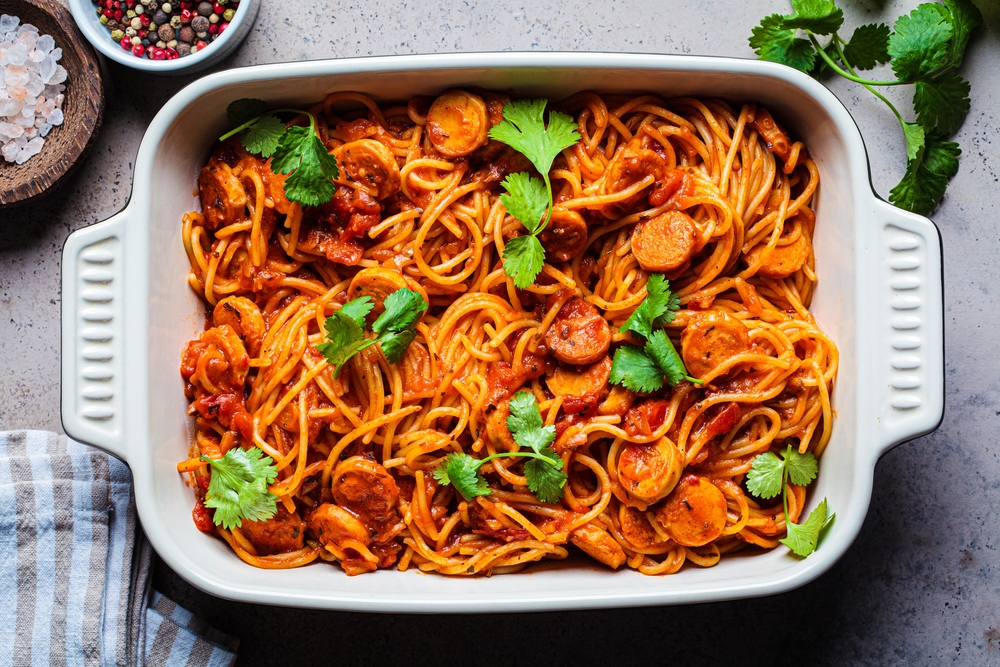
Why this method works
This method works primarily because of the tin foil, which helps protect the pasta from drying out or burning. Also, ovens are magic and far superior to microwaves when it comes to food experience. Don’t believe us? Just try reheating leftover pizza in the oven and you’ll be convinced.
Reheating Spaghetti on the Stove
Another great method to try is to reheat your leftover spaghetti by sauteing it on the stovetop. This is also a great method if you enjoy enhancing your leftovers when you eat them by adding extra spices or flavors. This method will work with or without pasta sauce mixed in, so feel free to try it both ways and see which one you prefer.
Here’s how to reheat your spaghetti on the stove:
- Turn the stove on medium heat– to start, place a pan on your stove and turn it on to medium (or medium-high if you’d like) and wait for the pan to get hot.
- Add a drizzle of olive oil– once the pan is ready to go, drizzle some olive oil onto the pan. If you want to get crazy we love adding fresh garlic to the olive oil before adding our leftover spaghetti. This also works with fresh herbs and other spices, and it can add a great kick to your meal that makes it really special. Again, that step isn’t necessary, but it can really elevate your leftover spaghetti experience.
- Add your spaghetti– next you’ll want to add your leftover spaghetti and sauce to the pan and saute it for roughly two to three minutes.
- Plate and enjoy
Why this method works
This method works well because the spaghetti gets reheated in warm olive oil (and delicious garlic and herbs if you choose), which helps it warm up without drying out like it would in the microwave. This method is also great because of the freedom to enhance your dish however you want. Garlic is great for your immune system and adding that extra kick can really change the flavor of the dish and make it feel like a brand new spaghetti recipe.
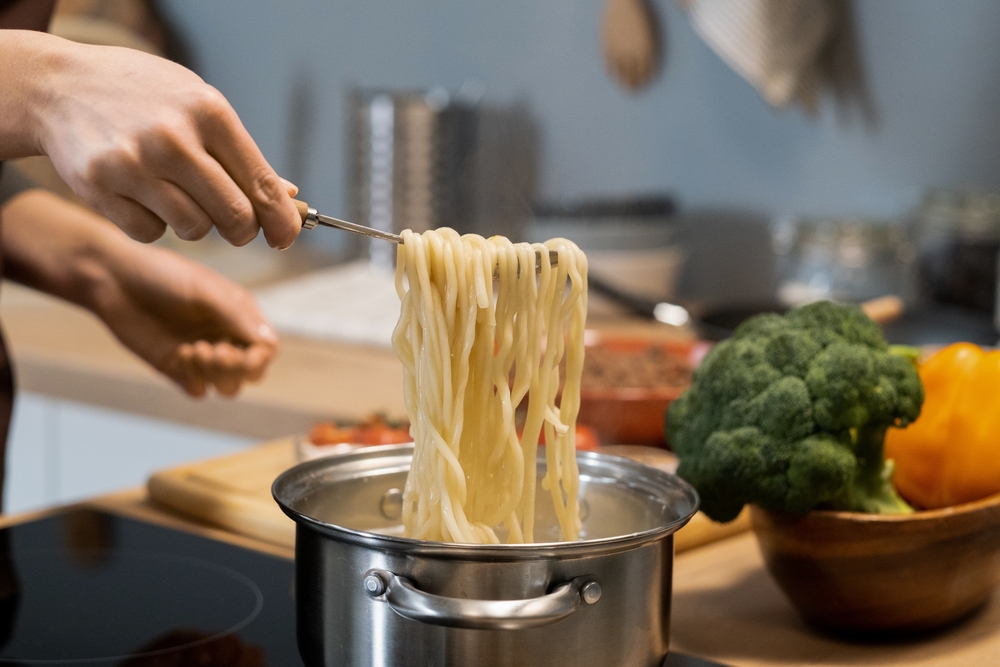
Make a Soup with Your Spaghetti
If you’re feeling a bit daring and want to get those creative culinary juices flowing you can even reheat your spaghetti by incorporating it into a soup. Soups are incredibly easy, delicious, and filling, and leftover spaghetti can really help it go the extra mile.
There are two other great things about this method: you can freeze the leftover soup (leftover inception!) which you can’t do for leftover pasta with good results, and there are virtually endless soup recipes you can try this with. Whether you want to add the spaghetti to chicken noodle soup, tomato soup, gumbo, or some other delicious soup, the world is your oyster.
How to reheat your spaghetti in soup:
Unfortunately for this method there isn’t a set of standard step-by-step instructions to follow, but that can make it even more fun. The beauty here is that you can make soup from scratch or add your spaghetti to canned or premade soup just as easily. It all depends on what sounds good to you.
For a simple soup you can try combining broth, sauteed celery, carrots, and onion, chicken (if you want), and your noodles. Spice it how you like it and enjoy!
How Do You Reheat Spaghetti Without It Getting Dry?
All of the methods listed above are great ways to reheat spaghetti noodles without drying them out, but you can also do it in the microwave. Reheating spaghetti noodles in the microwave without drying them out takes a bit of effort but it’s definitely worth it.
Here’s how to reheat spaghetti in the microwave:
- Portion spaghetti into a microwave-safe bowl
- Add 1-2 tablespoons of water depending on how much sauce you have on the pasta
- Microwave for 30 seconds at a time, stirring between each increment and testing the temperature
- Stop when the temp reaches the desired level

How Do You Reheat Baked Spaghetti?
Reheating boiled spaghetti is one thing, but reheating baked spaghetti can be even more difficult to get right without drying it out. Luckily there are actually two ways to accomplish this: the microwave or the regular oven.
How to reheat baked spaghetti:
If reheating in the microwave:
If you’re reheating baked spaghetti in the microwave, we suggest covering the piece of pasta with a damp or wet paper towel. This will help keep the pasta nice and moist in the microwave. Microwave on high for 30 second increments until the pasta is the temperature you wish.
If reheating in the oven:
To reheat your baked spaghetti in the oven you can follow the above instructions from the previous section with good results. Be sure to cover your pasta bake with a piece of tin foil to keep it from getting too crispy on top. For best results we suggest preheating your oven to a medium or low-medium temperature around 300 or so. Keep the pasta in the oven for about 20 minutes and then check on it to see if it’s to your liking.
How Do You Reheat Spaghetti and Meatballs?
Another question you may have in regards to reheating spaghetti is “what’s the best way to reheat spaghetti and meatballs?” There are actually tons of ways you can reheat spaghetti and meatballs, including in the microwave. All of the methods for reheating pasta listed in the sections above will work for reheating spaghetti and meatballs. In fact there isn’t any difference at all when reheating with or without meatballs, especially if the meatballs are already cooked (if they’re not you need to cook them before you eat them).
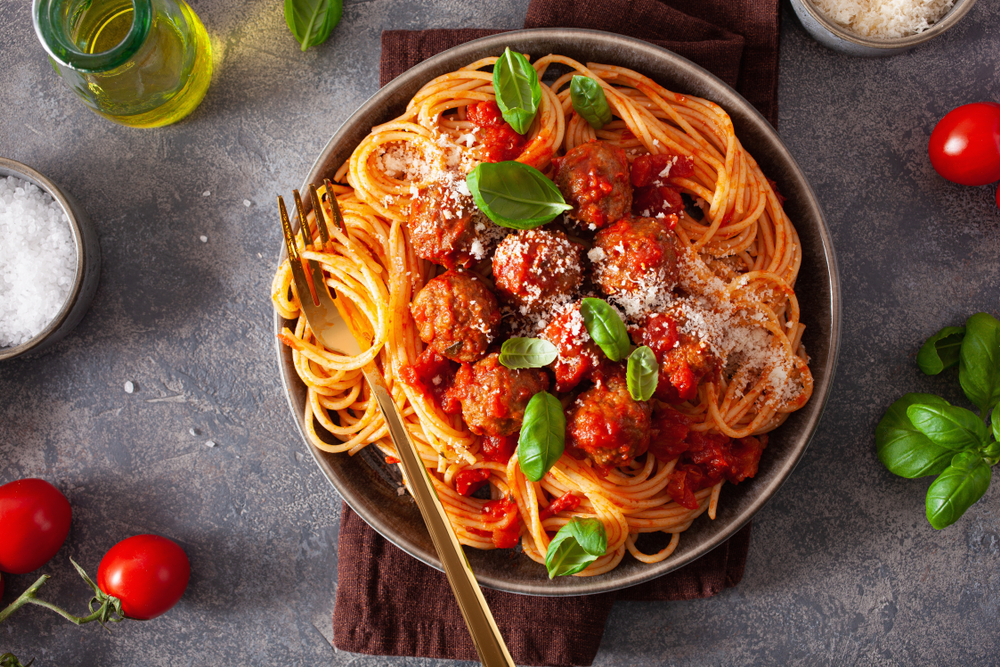
How to reheat spaghetti and meatballs in the microwave:
Just like with other spaghetti, you’ll want to portion out the desired amount of spaghetti and meatballs into a microwave-safe container. Next you need to microwave your pasta on high in 90-second intervals. Be sure to stir your spaghetti and meatballs after each interval and test the temperature (just don’t burn yourself!).
How to Reheat Chicken Spaghetti?
To reheat chicken spaghetti you’ll need to preheat your oven to 350 degrees Fahrenheit. Once you’ve portioned out your desired amount of pasta into an oven-safe dish, be sure to cover it with tin foil to keep it from burning. If you want to make sure it stays extra moist you can even add one or two tablespoons of chicken stock or chicken broth to the dish before you cover it with foil. We also love adding a bit more shredded cheese on the top of your pasta as well. Place everything in the oven and bake for 20 minutes.
Final Thoughts
If you’ve ever been disappointed by the results of your microwaved spaghetti, you are definitely not alone. It is one of the great culinary injustices of life that something so delicious should be so difficult to reheat easily and deliciously, but we must soldier on. All of the recipes in this article are virtually foolproof and a few even allow for a bit of extra creativity! Give all of them a try and see which one is your favorite!


